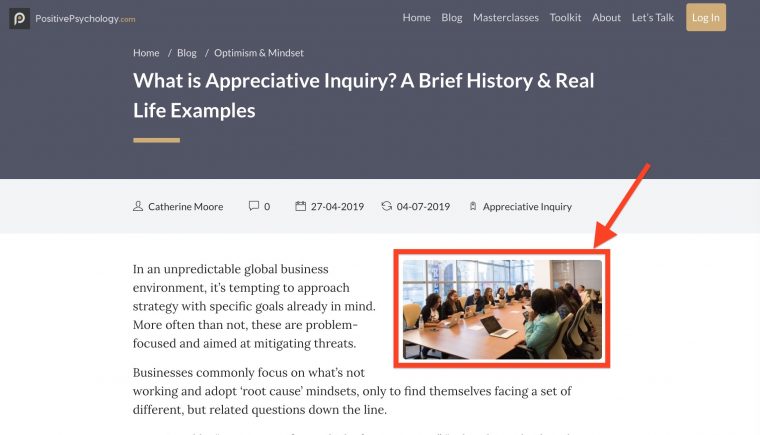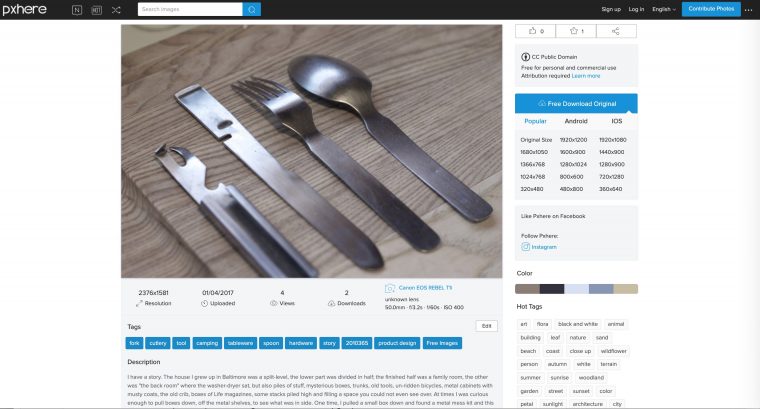Go ahead, be a copycat.
Down at number 111 of the 2019 Top Tool for learning is a site I use often myself for finding images available for reuse, pixabay. The rank is anything I care about. Among the comments:
“Free images, you do not have to attribute, good selection.” Instructional Designer, USA
“As with Unsplash, a great resource for images with no costs or attribution issues” Learning Technologist, UK“beautiful pictures to use in presentations, no attribution needed.”
What exactly are the issues about attributing? Why is it good to not have to attribute?
Is it a severe challenge to attribute? Does it hurt? Does it call for technical or academic skills beyond reach? Does it consume great amounts of time, resources? Why, among professional designers and technologists is it such a good thing to be free of this odious chore?
I can translate this typical reason to use public domain content, “I prefer to be lazy.”
There is a larger implication when you reuse content and choose not to attribute. Out in the flow of all other information, it more or less says to readers, “all images are free to pilfer. Just google and take them all. Be like me.”
Enough rant, what does this look like? A recent project I have been working for is a resource collection, among which includes a few online articles, posts.
For each one, I have visited the site, written an original paraphrased summary (or quoting and sourcing the original), and sought an image to represent on the site I am making. I start by looking at the images in the references I am citing. From the 50 or so I have looked at, I can say that 98% give no credit for their visuals.
Here’s one I worked on, a rather comprehensive and useful summary of the history of ane meaning of appreciative inquiry from an organization (like 16 people listed about page) called PositivePsychology.com.

Look at the image. It looks like the same window lit conference room full of happy people with laptops that seem to be on a billion other web pages. But it would work for my site as a featured image for the review… except no where on the page, caption, or anywhere is any source information of the image.
Were I a copycat, I would just grab it and go, and head off to the conference room for my next meeting with happy people.
But who are these people?
I can maybe find out in seconds in my browser with a right/control click of the image and doing a Google reverse image search. There are over 10 pages of results.

- The first three results hit image uploads for a UK housing diversity services, a solicitors office, and a coding company. No attribution.
- A slider image for Casa Kariba’s consultancy services “Customized Business Templates for operations procedures.” No attribution.
- Mover’s Development’s reasons to attend a moving industry conference. No attribution.
- The EITC’s Emotional Intelligence workshop uses it for a big featured image. No attribution.
- An announcement for Applied BioSciences Appoints Judith Korner, M.D., Ph.D., as Inaugural Member of its Scientific Advisory Board for Applied BioPharma Division has it for the lead image, I do not think Judith is in the picture. No attribution.
- Chwarae Teg uses the image on it’s description of a program aimed at getting more women into Non-Executive Director roles. No attribution.
- The same room full of happy people are on Text Request’s information about how to run a profitable webinar. No attribution.
I could go on but (maybe) you get the gist. The same group of happy people around a window list conference table help portray event sites, position announcements, workshops, and more.
It takes a few more page clicks to finally find in the mass of an attributed re-use of this same photo the/a source, it is a photo by Christina Mirollo on pexels (some irony that for all it’s usage on sites to demonstrate diversity, the photo is title “White Laptop”).
And of course, all 10 pages of those results adhered to the so-called pexels “license” it’s free to use, for any purpose, attribution not required “Giving credit to the photographer or Pexels is not necessary but always appreciated.”
And almost never done. Except on my site.
I don’t fully understand the plethora of sites out there offering “free to use” images, how exactly are the operating? For what purpose? One finds often the same pixabay images on pixabay and pexels images on pixabay. But wait a minute, both have been purchased by Canva?
And why do have these sites, like Unsplash moved away from where they started, when they did explicitly use Creative Commons CC0 licenses? One conjecture is that a non Creative Commons license opens the door to one day taking “free” out of the equation.
What is the game here? It’s not surprising that a google suggested query is How Does Unsplash Make Money? The summary is/was- they don’t it was all about the service being a loss leader for aiming design work to the company that spawned them, Crew. A oft linked explanation is The ROI of side projects – Crew blog … except that’s a dead link. Want to know why? Go to crew.co — they got bought. Do you think the buying company will adhere to keeping the word supplied with photos of happy people in window lit offices?
It’s a weird world of sites devoted to offering such images. Just last week I was using my special search shortcut to the search pile tools in Google Images ones with reuse licenses, and smiled seeing that in the first screen of results was one of my own photos.
Awwww.

Except rather than linking to my photo on flickr (which has a nice story in it, I think), I end up seeing my photo on pxhere.com.

Weirdly enough, in the upper right it states it as “CC Public Domain, Free for personal and commercial use, Attribution required Learn more” — which is not the public domain license at all. And it pxhere.com is saying attribution required, do they get attribution? Because no where on their site is credit give to me.
And technically, if all you do is follow things to the base level, they do not have to do. The original is licensed CC0.
It’s not about the rules of the license, it’s about maybe, maybe, operating in this mechanized place as a human, rather than a copy cat. This site pxhere.com has scavenged many many of my photos, I have no idea. Some they took were license CC BY, and after filing a notice, they did remove them. But what is their game here?
And more so, it comes into play that Google search results gives more weight to pxhere.com where the image has a mighty 4 views (some of which are me) over the original image, with almost 5000 views.
What kind of algorithm is that? It’s one that does not favor the individual. Image search results will favor sites like Needpix, Pixsels, Pixnio, Peakpx, Nicepic, and they still favor the really slimy maxpixel which is a direct rip off of pixabay.
That’s right. Do No Evil Google gives search exposure to this image on maxpixel.net (no credit given):

which is a complete copycat (er dog?) of the image I uploaded to my account on pixabay.

So riddle me this, Google- how to you allows results of this blatant copy of the pixabay site? The URls are interchangable, in fact take any pixabay URL, replace pixabay.com with maxpixel.net and you will find a copy.
- https://pixabay.com/photos/retriever-dog-resting-canine-1812661/
- https://www.maxpixel.net/retriever-dog-resting-canine-1812661/
Even the favicon for Maxpixel on the browser tab is ripped off from pixabay.

So did you know that the liberating world of “use any photo you want w/o the hassle of attribution” is such a bucket of questionable slime? And that Google, with all of their algorithmic prowess, gives more favorable results to sites that lift photos than to the ones where the originals exist?
So yes, just reuse photos without taking all of the severe effort to give credit to the source, because “you don’t have to.”
Be a copycat.
Show your flag of Lacktribution.
Like everyone else.
I will not. I adhere to Thanktribution.
Feature image:

copycat flickr photo by Mighty Free shared under a Creative Commons (BY-SA) license


You are so right. And you make me feel regret for being involved a while back in a publishing project where the author used such a picture in this lazy way.
Another issue is do you want to be linked to the other places that use the same picture? That could be a bad association!
I would gather most would not care about association with other sites, 99.99999% of the web would never even see it. It’s more an issue of using what is the equivalent of cheesy clip art.